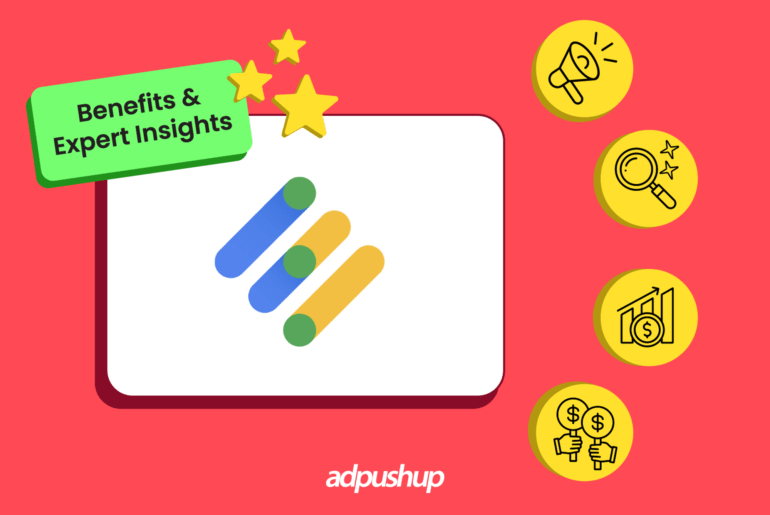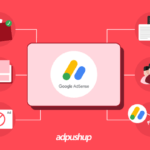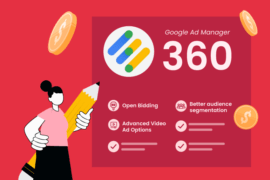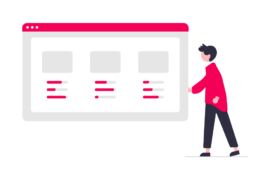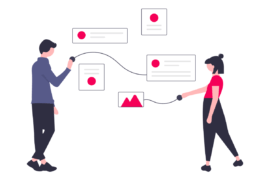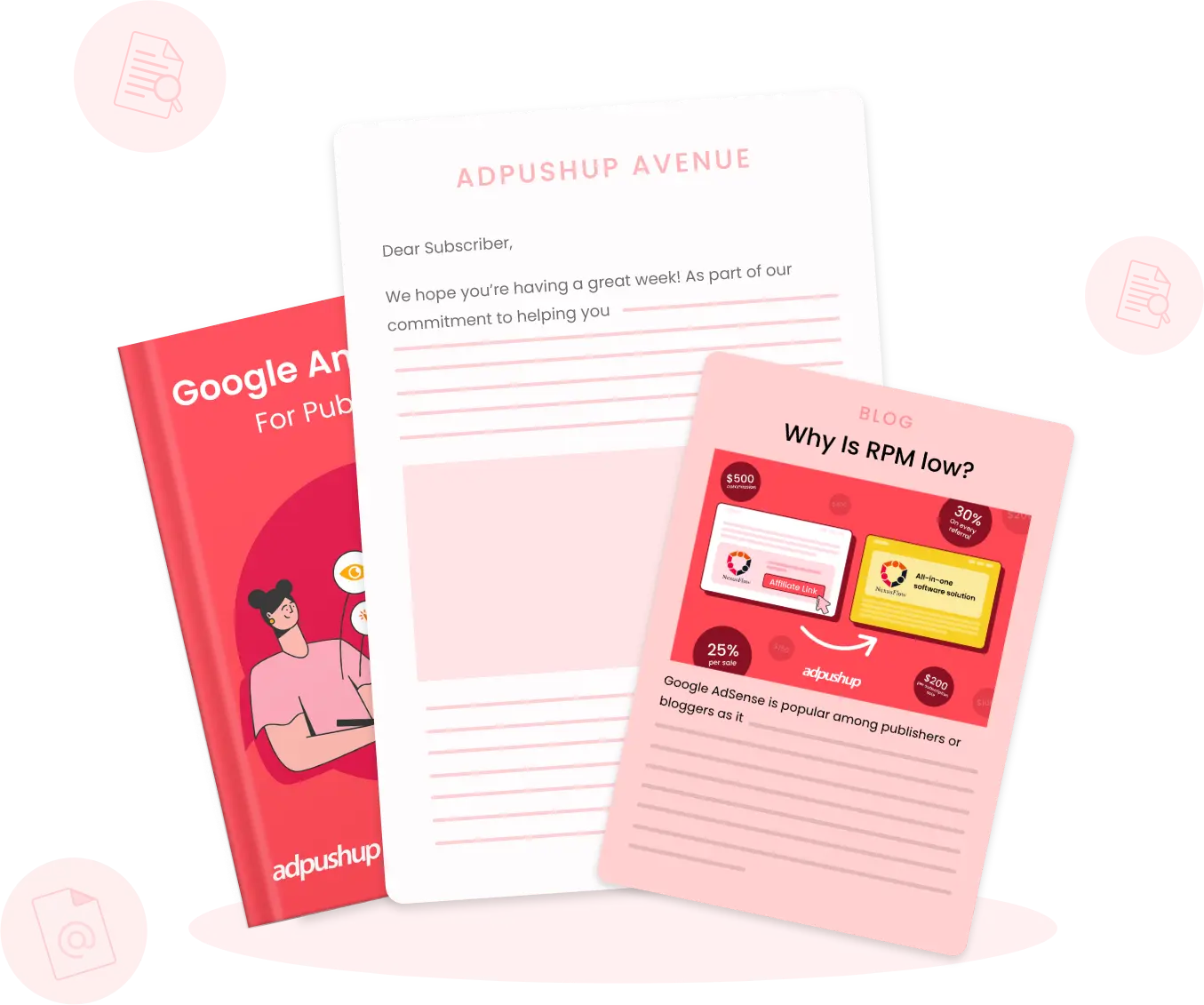Master Google Ad Exchange (Google Adx) with our insider’s guide for publishers. Learn expert strategies to boost ad revenue, optimize your ads, and take your advertising efforts to the next level.
Acquired by Google in 2008, Doubleclick for Publishers, which is now known as Google Ad Exchange (Google ads), has come a long way. Today, Google Ad Exchange, or Google AdX, stands as one of the world’s foremost advertising platforms.
For fast-growing publishers seeking to maximize their ad revenue and take their monetization strategy to the next level, utilizing Google Ad Exchange (google Adx) can prove to be an effective solution.
AdX allows eligible publishers to gain access to a much bigger pool of demand via campaigns from the best brands and advertisers worldwide. More demand means greater bid competition, which means more ad revenue for publishers.
In this blog, we will delve into the nitty gritty of Google Ad Exchange (Google Adx) , but first, let’s take a look at what it really is.
What is Google Ad Exchange (Google Adx)?
Google Ad Exchange, also known as Google AdX, is a Google-managed marketplace that allows publishers, advertisers, ad agencies, and ad networks to exchange impressions in real time through private and direct auctions.
In 2018, Google merged AdX and DFP to create a holistic environment for publishers to manage inventory. And hence, AdX is now accessed using a Google Ad Manager account.
Image Source – Marfeel
The platform provides a range of tools and services for publishers to manage and sell their advertising inventory. This enables advertisers to reach their desired audience by targeting specific demographics, locations, and behaviours.
Why Do Publishers Need Google Ad Exchange?
Publishers generally move from Google AdSense to Google Ad Exchange (Google AdX) in the hope of better monetization for their ad inventory. And if compared with AdSense, AdX does open up many opportunities. For instance:
- Google Ad Exchange allows selling impressions, not clicks, as in the case of AdSense.
- Next, it also allows publishers access to worldwide demand from other networks, whereas in the case of AdSense, publishers are limited to Google Ads advertisers only.
Now, let’s dig deeper into into the blog and take a look at what benefits Google Ad Exchange offers over Google Adsense.
How Does Google Ad Exchange Work?
Google Ad Exchange (AdX), as mentioned earlier in the blog, is a real-time marketplace that connects publishers with a vast pool of ad buyers, including ad networks, agencies, and advertisers.
Here’s how Google AdX works:
1. Publisher Integration
Publishers integrate Google Ad Exchange into their ad-serving setup, typically through a tag or code snippet placed on their website or app. This tag allows Google AdX to access the publisher’s ad inventory and conduct real-time auctions for ad impressions.
2. Ad Inventory Auction
When a user visits a publisher’s website or app, the ad space available for display is auctioned off in real-time through AdX. Advertisers bid on these ad impressions based on various factors such as audience targeting, ad format, and desired placement.
3. Real-Time Bidding (RTB)
Google AdX uses real-time bidding (RTB) technology to facilitate the auction process. Advertisers submit bids for ad impressions in real-time, with the highest bidder winning the opportunity to display their ad.
4. Optimization and Decisioning
AdX employs smart algorithms to optimize ad-serving decisions in real-time. Factors such as bid price, ad quality, and user relevance are taken into account to determine the winning ad and maximize revenue for the publisher.
5. Ad Rendering and Display
Once the winning ad is selected, it is rendered and displayed to the user within the publisher’s website or app. Google Ad Exchange ensures seamless integration and delivery of ads across various devices and platforms.
6. Reporting and Insight
Google AdX provides publishers with comprehensive reporting and analytics tools to track key metrics such as ad impressions, clicks, revenue, and eCPM. This data enables publishers to evaluate ad performance, optimize their ad inventory, and make informed decisions to maximize revenue.
Overall, Google Ad Exchange operates as a dynamic and efficient marketplace for buying and selling ad inventory in real-time. It offers publishers access to a diverse range of advertisers and maximizes revenue potential through automated auctions and optimization techniques.
How to Login to Google Ad Exchange (Google Adx)?
Step 1: Start by signing up with Google Ad Manager.
Step 2: Once you sign up, you will get DoubleClick for Publishers (DFP), which is an ad server by Google and a Google Account Manager. This dedicated platform will tell you if you are eligible for a Google adx account (AdX) account or not.
What are The Eligibility Requirements for Google Ad Exchange (Google Adx)?
Any publisher who has a site that complies with the AdSense quality guidelines can easily apply for an account, but to get access to Google AdX, you have to be a preferred publisher with at least 5 million monthly pageviews. Yes, it’s a bit steep.
Let’s take a quick look at the criteria publishers need to comply with in order to be eligible for Google Ad Exchange (Google AdX).
- 5 million pageviews a month
- Brand-safe content – avoid the use of blacklisted keywords and prohibited content
- An updated ads.txt file with details of inventory buyers
More checks could be conducted regarding ad viewability and safety concerns. You can ask your Google Account Manager to help you with an AdX account as well.
For publishers who do meet that eligibility requirement, Google AdX can help:
- Plan, negotiate, and book programmatic direct deals all in one place
- Set optimized price floors for better yield
- Connect to vast global demand featuring the best advertisers and brands
- Implement auto-refresh and sticky ads
- Provide access to better filtering, blocking, and revenue reporting tools
Why the Entry Barriers for Google Ad Exchange are So High?
Coming back to that 5 mil/month pageview requirement, the reason it’s so high is that Google positions AdX as a premium ad exchange compared to AdSense, which is a plug-and-play ad network.
A majority of campaigns that run on Google AdX are CPM (cost per mile) campaigns, which means that brands and advertisers run these campaigns on AdX because they know that Google does the legwork to ensure that the ads are being served on the highest-quality publishing websites online.
Publishers can also partner with a third-party Google ad partner (Google AdX reseller) to sign up for Google Ad Exchange.
How to Set Up Google AdX Account through a Third-Party Partner?
Here’s how publishers gain access to Google Ad Exchange with resellers or Google Ad Partners:
- Publishers have to pay them a fee to gain access to Google AdX.
- Most third-party resellers charge between 15 to 20 percent of the ad revenue generated via AdX every month.
- For example, if you are making $10,000 from AdX, the partner charge will be $1000 as their fee.
The third-party partners also help fine-tune ad layouts and ad display parameters to ensure the highest possible yield from ad inventory.
Top Factors to Consider When Choosing Google Ad Exchange Reseller: A Quick Checklist
Choosing an Ad Exchange reseller is a long-term partnership. Thus, it is important to research your options thoroughly before making a decision.
Here’s a checklist to consider before you finally rely on an advertising exchange reseller.
- Transition to Google Ad Manager
- Profit Sharing
- Offerings & Solutions
- Ad Revenue Enhancement
- Top-tier Demand Partners
- Technical Assistance Inventory
- Quality & Optimization
Moreover, be sure to ask the right questions to the Google Ad Partner or Reseller.
These questions could be:
- What is the revenue share model and pricing structure?
- Are there additional fees or costs involved beyond the revenue share?
- Can you provide details about the quality of the available ad inventory?
- Which premium demand partners do you work with?
We at AdPushup (Premier Google Certified Publishing Partner) can help you set up and implement Google AdX. Sign up for our platform to access AdX inventory.
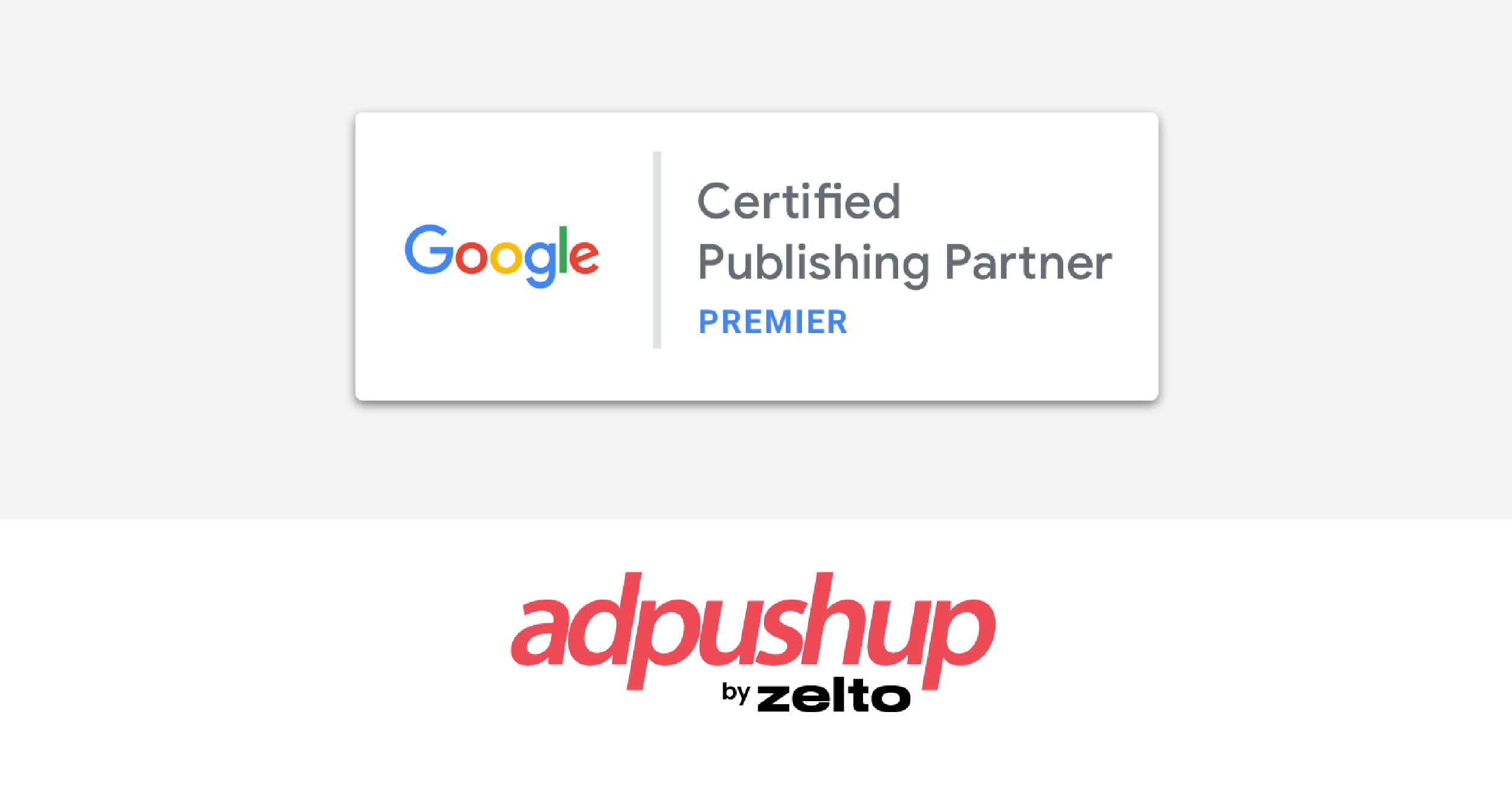
Another advantage of working with us is that in addition to AdX, we will connect you with other top ad exchanges and ad networks, giving you access to an even wider pool of demand.
The Key Advantages of Google Ad Exchange for Publishers
Here are some of the key benefits of using Google Ad Exchange:
1. Higher Ad Revenue Potential
Previously, the demand for Google AdSense came from two sources: Google AdWords and the Google Display Network. With recent updates, AdSense now covers a significant portion of programmatic demand.
However, Google Ads Exchange still provides higher demand for publishers. This is because it consolidates multiple demand-side platforms (DSPs) that are not part of the AdSense network, leading to increased competition and higher ad revenue for publishers.
2. Advanced Targeting Options
Second, Google Ad Exchange offers advanced targeting options, such as demographic, geographic, and behavioral targeting, which allows publishers to reach a more specific and engaged audience, increasing the effectiveness of their advertising.
3. More Control over Ad Content
It also provides more control over the type of ads displayed on a publisher’s website or mobile application, as opposed to Google AdSense, which operates on a more automated and less customizable basis.
4. Access to a Wider Range of Advertisers
If you’re a publisher switching from Adsense to Google Ad Exchange, this may come out to be a huge advantage. Compared to Adsense, Google Ad Exchange provides access to a larger pool of potential advertisers, which enables publishers to reach a wider audience and generate more revenue from advertising.
5. Increased Transparency
Lastly, Google AdX provides more transparency in the advertising process. This allows publishers to understand how their advertising inventory is being sold and at what price.
Also Read – How to Use Google Ad Manager with AdSense and Ad Exchange
Top 4 Tips to Boost Your Google Ad Exchange(Google Adx) Revenue
Once you’re finally onboarded to the Google Ad Exchange, it’s time to maximize its revenue generation potential.
1. Ad Inventory Optimization
Ad inventory optimization is one of the crucial aspects of maximizing ad revenue through Google Adsense. You may have read or heard this a lot, but doing it right can make a huge impact.
Here’s how you can do it:
Divide your ad spaces into different tiers based on viewer engagement and the quality of your page content.
Now, with Google Ad Manager, you can set specific controls on your Ad Exchange inventory. This ensures that your best ad spots reach the right advertisers at the best possible rates.
2. Implement Header Bidding
Implementing header bidding, a technique in which multiple demand sources compete simultaneously for ad inventory before it’s sent to Google Ad Exchange, can significantly enhance competition dynamics.
This increased competition compels Google AdX to bid more aggressively in auctions. This drives up ad rates and maximizes revenue opportunities for publishers.
3. Use Smart Pricing Strategies
Applying strategic pricing controls can greatly influence your revenue. By setting minimum prices for your inventory based on historical data and current market conditions, you can optimize earnings. Leverage dynamic pricing features to automatically adjust floor prices in response to changes in demand and supply.
4. Learn from Opportunities and Experiments
Google Ad Manager shares weekly suggestions through opportunities and experiments based on recent adjustments you’ve made. These insights show how your changes affect Ad Exchange revenue and suggest further improvements tailored to optimize your Google AdX performance.
These small suggestions and changes can make a significant difference, so make sure you keep a close eye on these.
Also Read- Google AdX vs. AdSense: History, Difference, Accessibility, Payment & More
Now that we have talked enough about the Google Ad Exchange or Google Adx, let’s weigh its benefits against those of Google AdSense.
Which Helps Generate a Higher Revenue – Google Ad Exchange or Google AdSense?
Determining which between Google AdX and Google AdSense generates higher revenue is dependent on several factors like publisher size, traffic quality, ad inventory, and niche.
Ultimately, the Google Adx or Google Adsense revenue potential depends on the situation and goals of the publisher. Large publishers with premium ad inventory and high-quality traffic may benefit more from Google Ad Exchange, while smaller publishers or those seeking simplicity may find AdSense to be a more suitable option.
Publishers need to evaluate their website’s needs and consider factors such as audience size, content quality, and monetization objectives when choosing between AdX and AdSense.
Google AdX or AdSense – Which One to Choose?
The ultimate decision between Google AdX and AdSense depends on the factors we just discussed, like your audience size, business requirements, and available resources. It’s important to note that while AdSense is accessible to most publishers who meet its criteria, AdX is a selective platform, with Google choosing its partners.
AdX offers the potential for higher revenue generation but demands more attention and expertise. Or you would need to enlist third-party assistance for ad operations management.
Publishers using Google Ad Exchange have access to large audiences, exposing them to top-tier advertisers keen on investing substantial advertising budgets in high-traffic websites. If you possess deep knowledge in the tech and ad industries and have the resources to leverage the platform effectively, AdX may be the optimal choice for you.
On the contrary, AdSense provides a straightforward and widely accessible means for revenue generation, catering even to small-scale and niche publishers. Its popularity also stems from its versatility in displaying various ad types—text, image, video, or interactive—targeted based on site content and audience.
So, opt for AdSense if you’re a small or medium-sized publisher with limited resources for ad management and implementation, as well as modest technical proficiency.
What are the Next Steps?
From the information above, it’s quite clear that with Google Ad Exchange, you can get the maximum revenue out of every session.
AdPushup can help you with both the setup and implementation of Google AdX, sign up to our platform to gain access to AdX inventory.
Another advantage of working with us is that in addition to AdX, we will connect you with other top ad exchanges and ad networks, giving you access to an even wider pool of demand.
Frequently Asked Questions on Google Ad Exchange
The 5 million page views a month, along with appropriate brand safety measures. Google AdX might reject a publisher’s website if it’s not hosting an ads.txt file, is known to show inappropriate content, a low viewability score, among other reasons.
Because Google checks websites based on multiple parameters and expects nothing less than excellence. Publisher’s website must have a great overall score when it comes to SEO, user experience, and previous ad campaign performance.
If publishers are unable to access AdX on their own, then it’s recommended to take the help of a Google Certified Publishing Partner (like AdPushup) to experience the benefits of the AdX account.
If you get access to AdX, then you can access it using your Google Ad Manager account. Google will ask you to sync the two first, once that’s done, you can create line items within GAM to call out for AdX demand to bid on specific impressions. Furthermore, syncing these services allow publishers to get detailed reporting and set up hybrid auctions by competing AdX, private and direct deals, and more simultaneously.
These are Google partners that help publishers access and use Google ad exchange. Google AdX Partners are trusted by Google to offer the best services to publishers when it comes to ad monetization.
They help publishers optimize their existing ad stacks and increase eCPM. Moreover, these partners also get publishers the right demand for their inventory and help with setting up various deals and auctions.
No, Google Ads is a pay-per-click advertising platform, not an ad exchange by Google.

Deepak has a keen eye for detail and a deep understanding of the ad tech landscape. Whether it’s through in-depth articles, thought-provoking insights, or compelling storytelling, he’s dedicated to helping people navigate the complex world of ad tech with the simplicity of his words.
